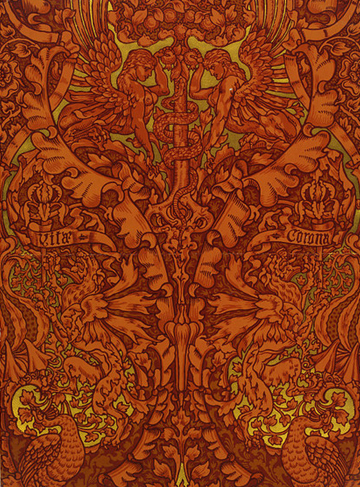Andrew Graham-Dixon reviews exhibitions of Walter Crane and 'The Last Romantics.
'STARING, wild-eyed, and clutching her 'fantastic garlands', John William Waterhouse's Ophelia prepares to take her last dip. Her hysteria seems stale, stage-managed, but perhaps that was inevitable; by the time Waterhouse got round to painting the nineteenth century's favourite nutcase, in 1910, Ophelia had already been done to death, so to speak, by the Pre-Raphaelites.
It might be weak and derivative, but Waterhouse's painting is an appropriate prologue to the Barbican's massive survey of British narrative painting circa 1890-1950 - dedicated as it is to art that insisted on non-originality, that consecrated itself, for the most part, to cliche.
Whole rooms throng with Ophelias and her fellow sisters in woe, who collectively emit the drawn-out sigh of Pre-Raphaelitism's slow, slow death. But this show is more than epitaph and epilogue; it argues for a coherent but forgotten tradition in British art, no less. Casting its net wide, it finds space for, inter alia, 'Celtic Elements in Scottish Art at the Turn of the Century', assorted Rome Scholars, would-be muralists and later practitioners of narrative art such as David Bomberg, Mark Gertler and Stanley Spencer.
The exhibition organisers have opted for 'The Last Romantics' as a hold-all title, which is fine - it's fairly catchy, and has the advantage of being a line from Yeats - except that none of the work on display has any connection with Romanticism. The show is better understood as a belated riposte to The Royal Academy's 'British Art in the Twentieth Century: The Modern Movement'. Its subject is The Non- Modern Movement, its theme the survival of late nineteenth-century attitudes into this one.
Some of the survivals are, indeed, remarkable. The palm for reactionary persistence goes to Frank Cadogan Cowper, whose Pre-Raphaelite...


